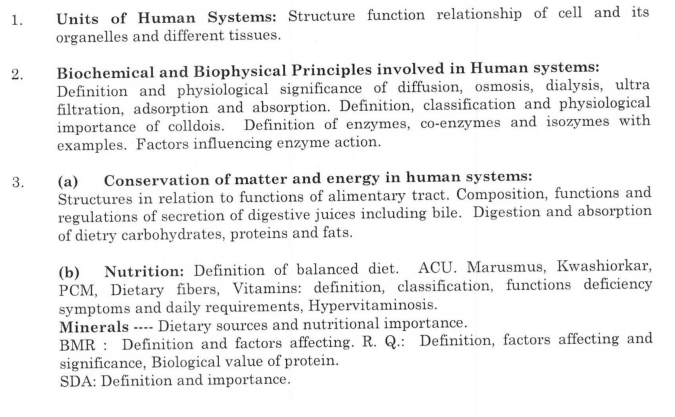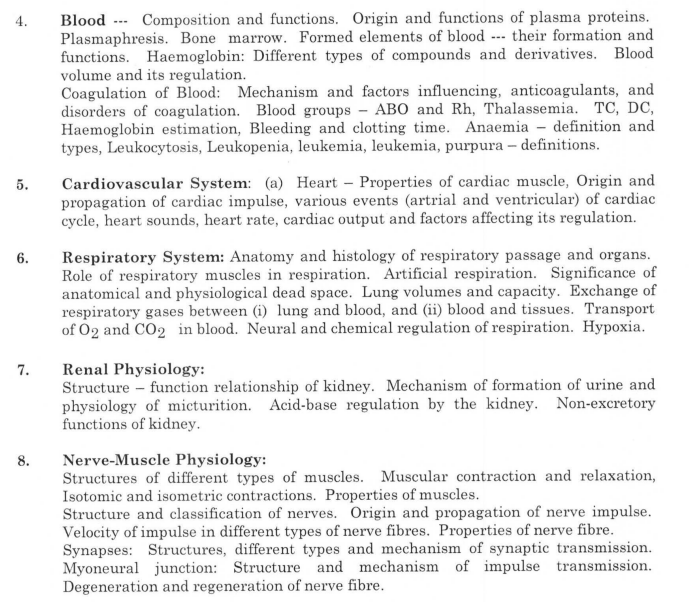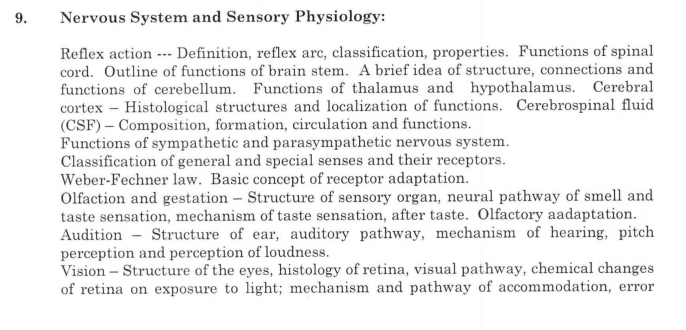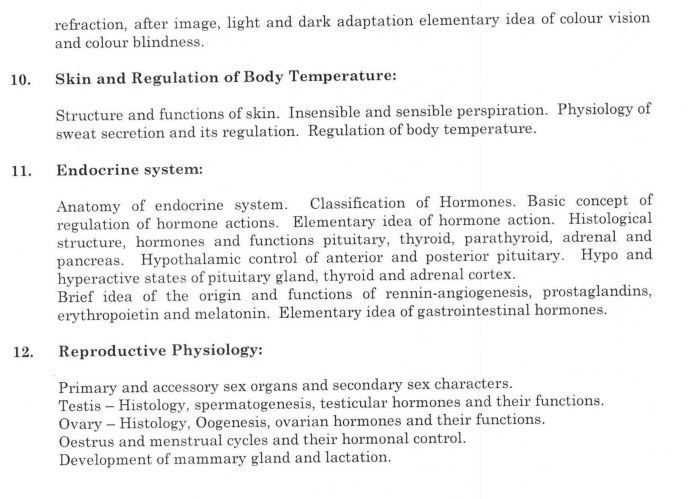WBSSC SLST Life Science Syllabus 2025 Download: West Bengal School Service Commission 2nd SLST Life Sciences Exam Official Syllabus 2025 for Class 9 & 10 Assistant Teacher has been given below. Download the West Bengal SSC SLST Santhali Medium School Life Science Assistant Teacher Syllabus that was published in 2021 by the Commission. Also the same syllabus was provided in 1st SLST 2016.
পশ্চিমবঙ্গ স্কুল সার্ভিস কমিশন 2nd SLST 2025 পরীক্ষার আপডেট ও মেটেরিয়াল এর জন্য ফেসবুক Study গ্রুপে জয়েন করুন (Click to Join).
SSC Life Science Syllabus 2025
Class 9 – 10 Syllabus:
ZOOLOGY
Invertebrates:
Classification of major phyla upto subclasses with examples.
Structure and function of -Flagella, Cilia, Para podia, Ctenidium, Book lung, Nephrilia, Flame cells, Malpighian tubes, Green gland.
Chordates:
Classification of Amphibians, reptilians and mammalians upto order with examples.Special features – Filter feeding in branchiostoma, Integumentory derivatives, Accessory respiratory organs, single and double circuit heart,
aortic arches in vertebrates, origin and distribution of cranial nerves.
Cell Biology, Genetics & Molecular Biology:
Ultra structure and function of Plasma membrane, Mitochondria, Lissome & Ribosome.
Chromosome structure. Cell cycle
Properties of DNA and RNA, DNA as genetic material
Mechanism of Replication, Transcription & Translation.
Cell division: Mitosis & Meiosis
Mendelism & neo-Mendelism
Modes of inheritance of Autosomal and sex-linked genes
Thalassemia and Hemophilia
Mutation; Down syndrome & Kline fetter syndrome
Linkage and recombination
Sex determination in Drosophila and Man
Oncogane & Cancer
Developmental Biology:
Spermatogenesis & Oogenesis
Fertilization
Process of cleavage in frog and chick
Gastrulation in frog and chick
Placentation in mammals
Organizer concept.
Evolution, Adaptation & Distribution:
Chemical basis of origin of life.
Darwinism and synthetic theory of evolution.
Hardy – Weinberg Equilibrium in relation to natural selection.
Adaptation: Aquatic, Volant & Desert.
Zoogeographical realms and their subdivisions with their characteristic fauna
Ecology & Wildlife:
Energy flow through ecosystem
Population ecology : Properties and growth forms.
Community ecology; Niche concept, Resource partitioning and species
diversity
Biodiversity: As resource. Principles of conservation of Biodiversity (in situ &
ex situ)
Conservation of wildlife: purpose & methods, concept of National Park.
Sanctuary & Biosphere Reserve, Conservation of Tigers.
Parasitology, Histology & Endocrinology:
Life History, pathogenecity and clinical features of Entamoeba histolytica
Ascaris, Fasciola hepatica, Plasmodium vivax.
Immune response T & B lymphocytes, Antibody production in parasitic
infection.
Histology of Pituitary, Thyroid and endocrine Pancreas and their hormonal
uncuonsm mammals.
Animal Physiology & Biochemistry:
Components of vertebrate blood, clotting & coagulation, ABO Blood group, Rh
factor,
Physiology of nerve impulse & synaptic transmission.
Classification of Carbohydrates, Proteins and Lipids.
Enzymes: Classification, its properties and action
Vitamins – Chemical names, sources, deficiency, disorders for vitamins A, C and E
Economy Zoology
Aquaculture: Induced breeding & Composite fish culture.
Sericulture: Silk varities in India, mulberry silkworm culture, diseases of
silkworm and their control.
Pest: Biology & Control, of Paddy pest.
Animal husbandry: Common poultry breeds (Fowl), rearing methods,
diseases & control.
BOTANY
GENERAL BOTANY
Introduction: Concept of living object; Definition, basic structural organization of plant.
Cell
Minimum requirements of a “Cell to be cell”
Prokaryotes and eukaryotes; Characteristics and differences with
reference to the plant cell wall composition.
Structure and functions of cellular organelles.
Chromosome: Ultra-structures and chemical compositions.
Cell division: Mitosis, Meiosis, their significance.
PLANT ANATOMY
Plant Tissue – Definition, Classification, Distribution and Functions; Occurrence
and Classification of Meristematic and Permanent tissues; Simple and Complex
tissues. Primary structures of root, stem and leaf in angiospermic plants
ECOLOGY AND ENVIRONMENT
Divisions of ecology, ecological factors, plant succession, Adaptation of Hydrophytes,
Xerophytes, Halophytes, General ideas about global warming and air pollution – a
brief knowledge.
PLANT GROUPS
Salient features of Algae, Fungi, Bryophytes, Pteriodophytes, Gymnosperms
and Angiosperms.ALGAE: Life cycle patterns with one example in each pattern.
Economic
importance (as food, fodder, agar, algin)
FUNGI: Structure of mycelium; nutrition; Asexual Spore forms; Economics
importance (alcohol, Penicillin and edible mushroom)
BRYOPHYTES & PTERIDOPHYTES: Structural organization and function
of archegonia and antheridia
GYMONSPERMS & ANGIOSPERMS: Structural organization of male and
female gametophytes.
PLANT PATHOLOGY:
Necrosis, hypo plastic and hyper plastic symptoms of plant
diseases. Disease control – a brief knowledge.
MORPHOLOGY:
Inflorescence; pollination – types and contrivances: Placentation
types and example; Development of embryo-sac; Fertilization and post-fertilization
TAXNOMY:
Principles of artificial, natural and phylogenetic systems of
classifications, Binomial nomenclature. Functions of Botanical Garden; Importance of Herbaria in Botanical Studies. Diagnostic characters and economic importance of
the following families: Leguminosae (Fabaeae) , Solanaceae.
Rubiaceae and Gramineae (Poaceae).
PALEOBOTANY:
Fossils – Types with examples; Applications of Paleobotany.
PLANT PHYSIOLOGY:
Absorption: Water & Sales uptake by living cell
Transpiration: Its role in ascent of sap
Nutrition: Role of mineral elements in plants.
Photosynthesis: Phytosynthetic pigments, Hill reaction, Photo phosphorylation, Calvin cycle.
Respiration: Glycolysis, Krebs’ cycle and ATP synthesis.
Hormones: Definition, site of synthesis and role of auxin & ethylene. Role of
synthetic hormones in agriculture
CYTOGENETICS & HEREDITY:
Nature of gene; Linkage and Crossing-over;
Mendelian Principles, Darwinism & Neo-Darwinism.
MICROBIOLOGY:
Virus – general properties, structure of Bacteriophage and
TV; Electron microscopic structure of a bacterial cell. Role of bacteria in nitrogen
cycle and maintenance of soil fertility. (N2 – fixation, nitrification, denitrification
and ammonification).
Physiology:




Important Links
| SLST জীবন বিজ্ঞান (নবম দশম শ্রেণীর) Syllabus | Download |
| Facebook Group for 2nd SLST Preparation | Join Now |
| SLST 2025 Notification | Click Here |
| SLST Syllabus {All Subject} | Click Here |
| SLST Previous Question Paper {All Subject} | Click Here |
Please Note: The syllabus of SLST Life Science 2025 Exam has been derived from 1st SLST 2025 Official Syllabus. New syllabus will be published soon by the West Bengal SSC Department.
বাংলায় জীবন বিজ্ঞান শিক্ষক এর সিলেবাস জানতে আমাদের ফেসবুক গ্রুপ জয়েন করুন.

Leave a Reply